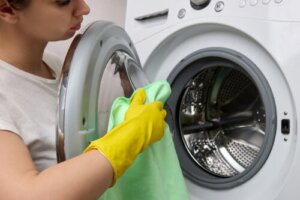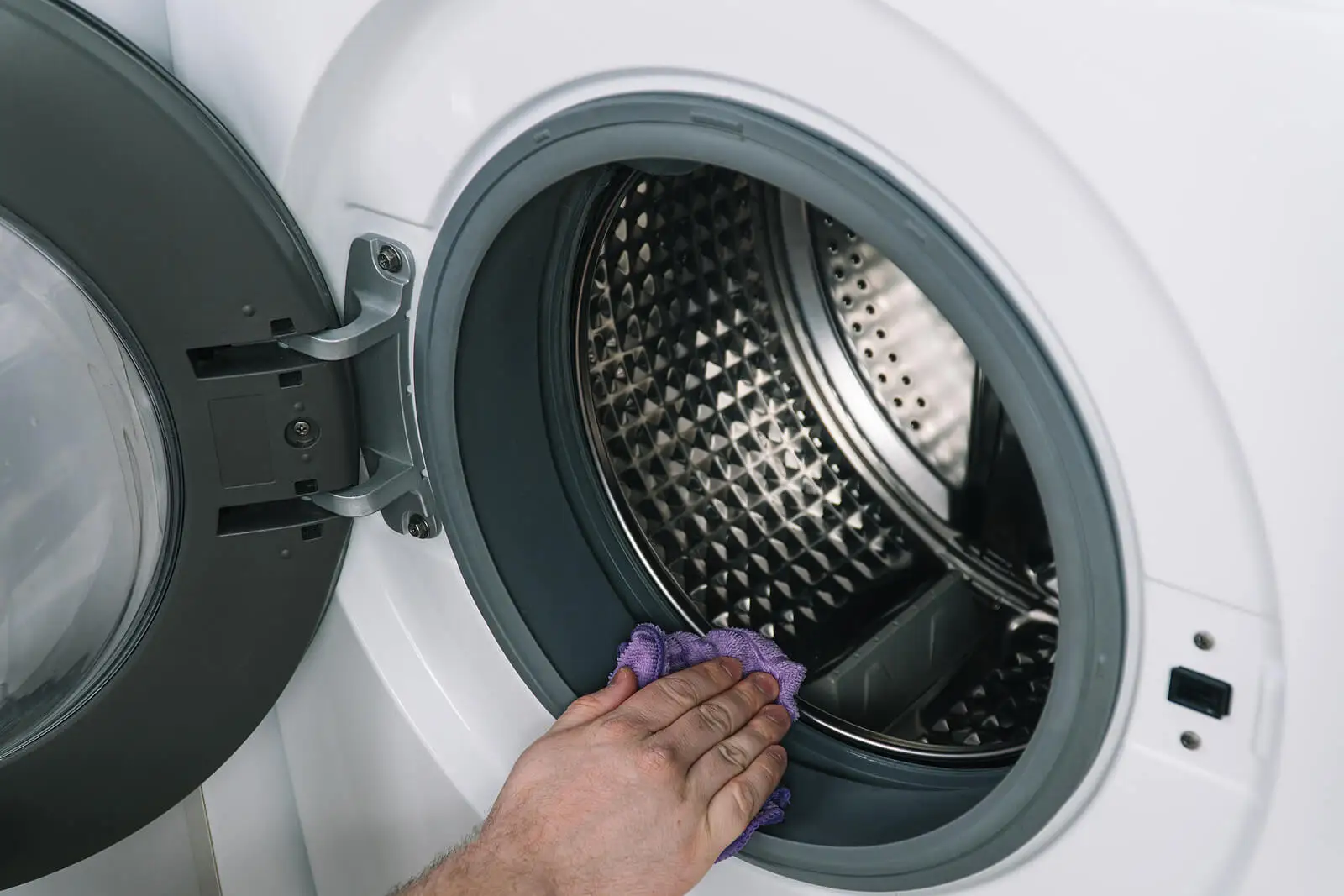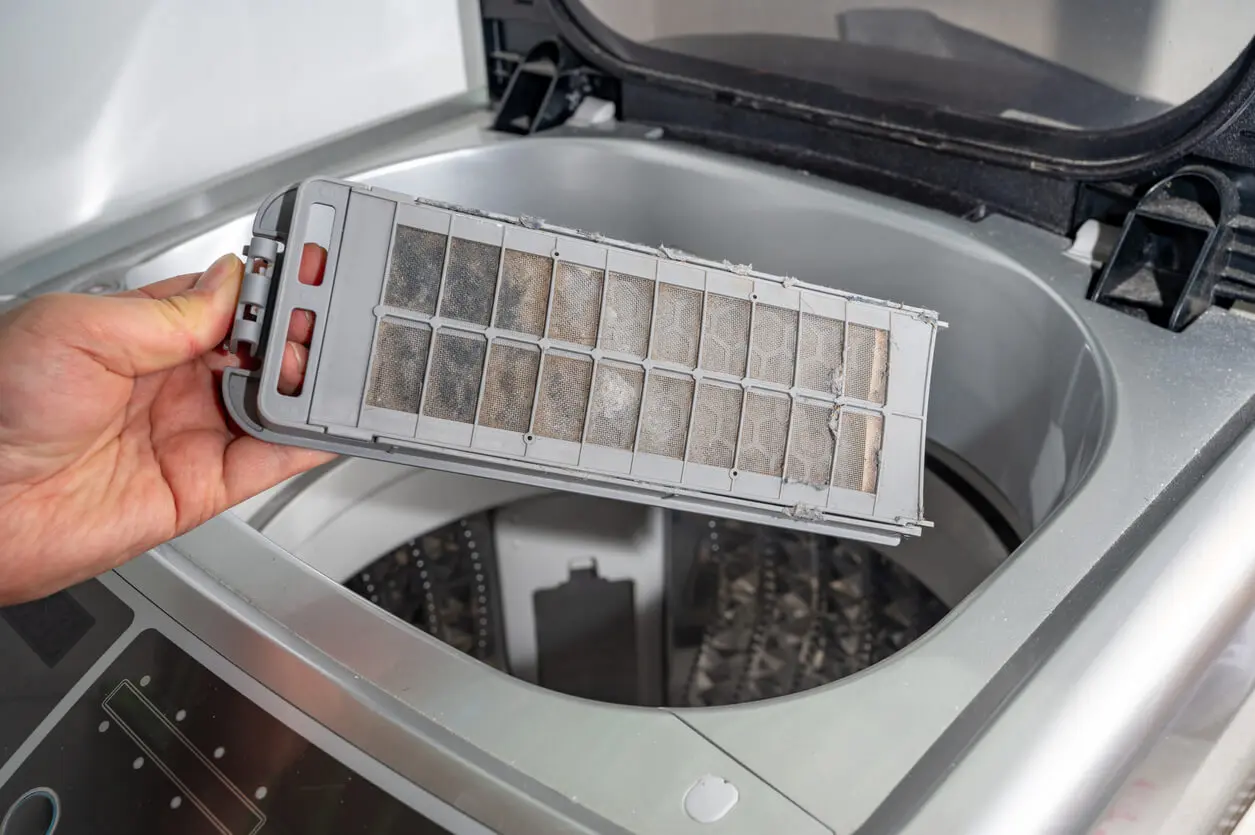How to Remove Lint from the Washing Machine

The washing machine is one of the most useful household appliances. It allows you to wash your clothes without having to make too much effort; all you have to do is separate them into coloreds and whites, pour in the detergent and select the cycle. However, like other tools, it still requires some maintenance. In this article, we’ll tell you how to remove lint from your washing machine.
Although many people don’t realize it, with each wash the clothes give off small pieces of lint that accumulate over time in the machine. If you’re not careful, over time these end up sticking to the clothes. Because of this, you need to learn how to remove them. Let’s take a look at some recommendations.
How to prevent the washing machine from leaving lint on clothes
If the clothes have started to come out of the washing machine with lint on them, the best thing to do is to start a thorough cleaning of the appliance as soon as possible. In this sense, some products such as vinegar, baking soda, and bleach are useful. However, keep in mind that these shouldn’t be combined.
In general terms, it’s best to do two separate cleanings or cycles. That is to say, first one and then the other. Also, don’t overlook areas such as the filter and rubber bands, which can also retain residues. Let’s get to work!
Step 1. Remove lint from the washing machine with bleach and hot water
As detailed in an article shared in Chemical Safety Facts, the proper use of bleach facilitates the cleaning and disinfection of a wide variety of surfaces. When used correctly, it can whiten, kill germs and promote the removal of certain residues.

What should you do?
To remove lint from your washing machine, pour a little bleach into the bleach tank. Then select the hot water fill and run any cycle you want. Wait for it to finish and carry out the next step.
Discover more here: Naturally Eliminate Mildew from Your Washing Machine
Step 2. Remove lint from the washing machine with vinegar and hot water
Once the cycle with bleach is finished, proceed to pour a cup of white vinegar into the tub. You can also add a teaspoon of baking soda instead. Now, select the hot water fill and, finally, choose any cycle and wait. When it’s finished, open the door and let it steep for a while.
Did you know that white vinegar is one of the most widely used natural elements in household cleaning? This is highlighted in an article published in NSF International, which details that its acetic acid content favors the decomposition of certain types of dirt, stains and bacteria.
Step 3. Clean the filter
The next step is to clean the washer filter. The first thing you need to do is to find it, as it varies in location depending on the model or brand. However, most of them are usually located at the bottom or at the back of the machine.
What should you do?
Carefully remove it. There’s usually a button or some sort of lever to remove the filter. With the help of a soft bristle brush you can remove the accumulation of lint or dirt. You can also wash it very carefully with soap and water to get it completely clean.
Now that it’s free of lint, all that remains is to insert the filter again. Now you can be sure that you’ve managed to remove the lint from the washing machine!

Read more here: The Best Tips for Washing Wool Garments
Repeat the process every three months
How often you need to clean the washing machine may vary according to how much you use it. Despite this, it’s advisable to do it at least every three months, since dirt and lint will always begin to accumulate.
In addition, as detailed in a study shared in Frontiers in Microbiology, washing machines accumulate bacteria that can cause bad odor in the garments and in the machine itself. They even retain fungi and other microorganisms that can deteriorate clothes.
Thus, proper cleaning and maintenance guarantees both its proper functioning and the care of the garments. As a complement, it’s worth cleaning the outside of the machine with a little neutral soap and a damp cloth to make it really shiny!
All cited sources were thoroughly reviewed by our team to ensure their quality, reliability, currency, and validity. The bibliography of this article was considered reliable and of academic or scientific accuracy.
- Chlorine. (June 9, 2022). Chemical Safety Facts. Available in https://www.chemicalsafetyfacts.org/chlorine/
- Reliable and Scientific Tips for Cleaning With Vinegar. (2021). NSF International. Available in https://www.nsf.org/blog/consumer/reliable-scientific-tips-cleaning-with-vinegar
- Callewaert, C., Van Nevel, S., Kerckhof, F. M., Granitsiotis, M. S., & Boon, N. (2015). Bacterial Exchange in Household Washing Machines. Frontiers in microbiology, 6, 1381. https://doi.org/10.3389/fmicb.2015.01381
This text is provided for informational purposes only and does not replace consultation with a professional. If in doubt, consult your specialist.








